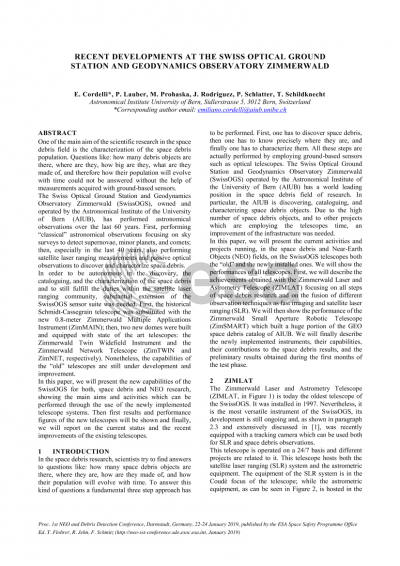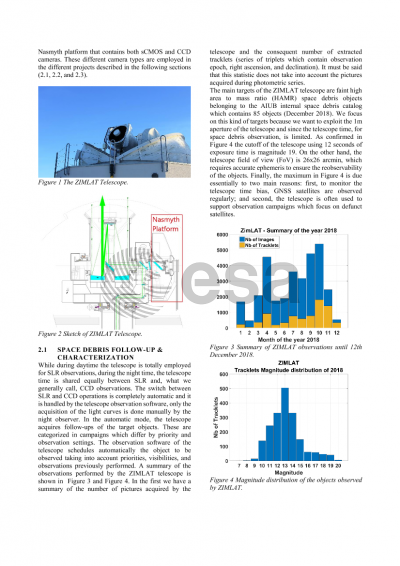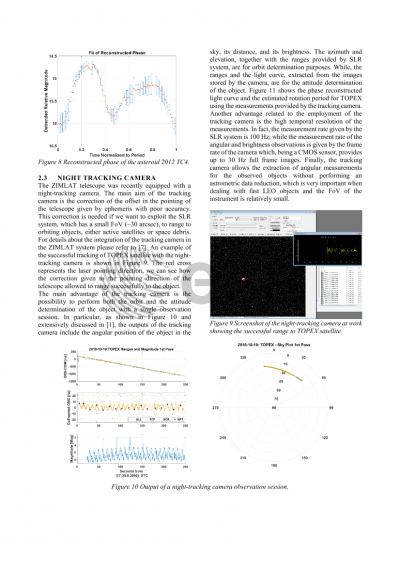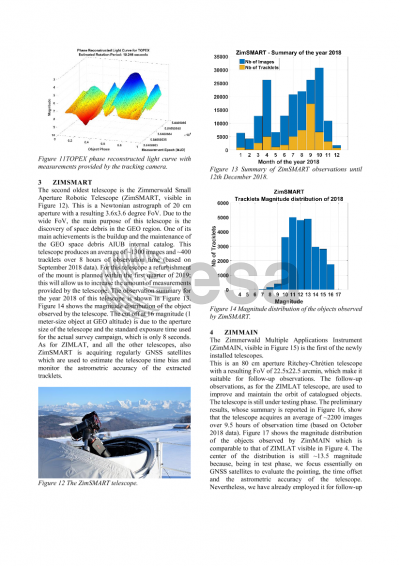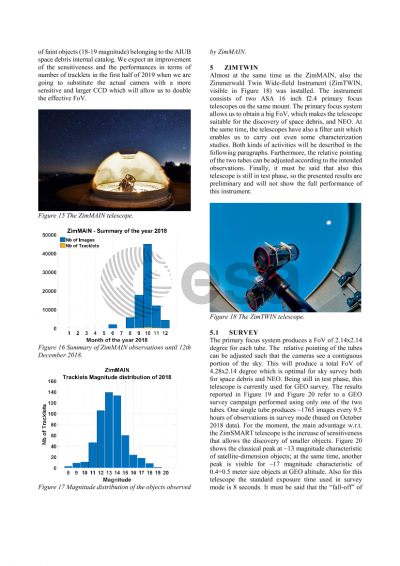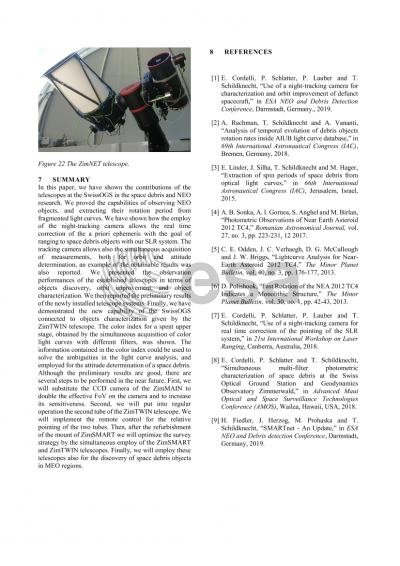Document details

Abstract
One of the main aim of the scientific research in the space debris field is the characterization of the space debris population. Questions like: how many debris objects are there, where are they, how big are they, what are they made of, and therefore how their population will evolve with time could not be answered without the help of measurements acquired with ground-based sensors.
The Swiss Optical Ground Station and Geodynamics Observatory Zimmerwald (SwissOGS), owned and operated by the Astronomical Institute of the University of Bern (AIUB), has performed astronomical observations over the last 60 years. First, performing “classical” astronomical observations focusing on sky surveys to detect supernovae, minor planets, and comets; then, especially in the last 40 years, also performing satellite laser ranging measurements and passive optical observations to discover and characterize space debris.
In order to be autonomous in the discovery, the cataloguing, and the characterization of the space debris and to still fulfill the duties within the satellite laser ranging community, substantial extension of the SwissOGS sensor suite was needed. First, the historical Schmidt-Cassegrain telescope was substituted with the new 0.8-meter Zimmerwald Multiple Applications Instrument (ZimMAIN); then, two new domes were built and equipped with state of the art telescopes: the Zimmerwald Twin Widefield Instrument and the Zimmerwald Network Telescope (ZimTWIN and ZimNET, respectively). Nonetheless, the capabilities of the “old” telescopes are still under development and improvement.
In this paper we will present the new capabilities of the SwissOGS for both, space debris and NEO research, showing the main aims and activities which can be performed through the use of the newly implemented telescope systems. Then first results and performance figures of the new telescopes will be shown and finally, we will report on the current status and the recent improvements of the existing telescopes.
Preview
